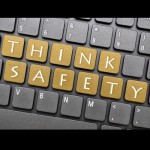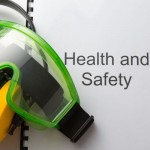Forming A Safety Committee: Part 1 of 2
 A few weeks ago, we posted an article about how to develop a safety culture in your workplace. One of the suggestions we gave was to form a committee to address worker concerns about fall protection and other issues related to the health and well-being of employees. Today, we take a closer look at safety committees.
A few weeks ago, we posted an article about how to develop a safety culture in your workplace. One of the suggestions we gave was to form a committee to address worker concerns about fall protection and other issues related to the health and well-being of employees. Today, we take a closer look at safety committees.
A safety committee allows executives, management, and workers to collaborate on the greater goal of creating a facility free from hazards that threaten the well-being of employees. This group should be responsible for defining procedures for your company, promoting the safety culture, and ensuring your compliance with OSHA and other federal and state regulations.
Of course, fall protection should be a primary focus of the task force. The group, or a subgroup, should be in charge of developing and maintaining your company’s fall protection plan. It should be responsible for addressing employee issues concerning fall safety, eliminating fall hazards on the job, and ensuring that everyone gets the right fall protection equipment and training for their work environments and duties.
Who Should Be On It?
A safety committee should be a worker-focused group. One of its main purposes is to give lower level employees an opportunity to provide input on their concerns. When your workers know that executives and management are listening to and interacting with them to resolve issues, they will be more willing to follow the resulting policies, procedures and practices.
The committee should be led an executive with Team Leadership experience, preferably your Safety Director. It should include one or two managers, and three or more workers. Ideally, it should have a good cross-section of employees from all company levels and shifts. (If your business has several locations, you might want to think seriously about starting a group at each location.)
(On a side note, the panel should include someone from your accounting and budget office, who will be able to advise the members on available financing and budget restrictions for buying new equipment.)
In terms of fall protection, the leader or other senior member should be trained and qualified as a Competent Person. At the very least, the workers on the committee should be qualified as Authorized Users of fall protection equipment. But if your employees use fall protection equipment on a daily basis, we highly recommended that all members of the group should undergo training and be qualified as Competent Persons.
Why? Because OSHA regulations state that businesses who have workers at heights are required by law to have a fall protection plan, and that this plan must be prepared by a qualified person. Members who have trained as Competent Persons will be qualified to create and maintain effective fall protection procedures for your business. They will be more familiar with OSHA regulations, and better able to identify and eliminate fall hazards and/or potential OSHA violations in the workplace.
 Needless to say, the members should also undergo any other types of training necessary for them to understand and address safety issues at your facility. Training gives your team members the expertise they need to ensure that your procedures are effective, and that your program is successful.
Needless to say, the members should also undergo any other types of training necessary for them to understand and address safety issues at your facility. Training gives your team members the expertise they need to ensure that your procedures are effective, and that your program is successful.
What Should The Committee Do?
As mentioned, a committee should be responsible for developing and maintaining your company’s fall protection plan and any other safety procedures that your employees must follow. These plans and procedures should be developed as written programs, and should be occasionally reviewed and updated to reflect changes in fall equipment, work environments, company goals, etc.
The group should be responsible for notifying employees of new procedures, and of changes to existing procedures. They should conduct regular worker safety talks, and encourage your employees to follow safety practices on a daily basis. Also, they should have the authority to enforce procedures, and to make sure employees at every level are following them.
The committee members should do inspections and audits of work areas to identify fall and other safety hazards, and suggest corrective measures. Committee members should also do regular interviews with employees in work areas. This gives workers the opportunity to voice their concerns, and to make suggestions about how to make their work environments safer and what types of fall protection and other equipment would be best for them.
The committee should do regular inspections of fall protection and other equipment to make sure it is functioning properly and fulfilling its purpose of keeping employees safe on the job. If new fall protection equipment is needed, the committee should make that recommendation to upper management.
Also, when making purchases of fall protection and other equipment, the committee should be involved in negotiating with manufacturers or vendors. If fall protection or other training for employees is necessary, the safety committee should identify the need, and facilitate that training.
Finally, in the case of accidents and injuries, the safety committee should not be involved in making decisions on worker compensation payments. This should be done by company management.
Instead, the committee should do injury reviews to determine how accidents can be avoided in the future. Injury reviews might include examining the work area, interviewing employees who were involved, and reviewing accident investigation reports, claim summaries, or loss analysis reports. These types of reviews should also be done for incidents (i.e. “near misses”) where injuries were avoided.
This ends Part One of our two-part article on safety committees. In Part Two, we’ll look at what executives at your company can do to support your safety committee.

